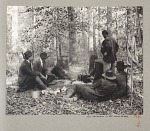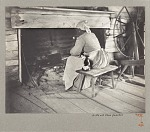Eickemeyer, Jr., Rudolf
Description
Rudolf Eickemeyer, Jr. (1862–1932) used a wide variety of printing processes, printing out some negatives in more than one medium. In his lectures, he pointed out that this approach to photography was important because in the hands of a photographer who “lives and understands the infinitely varied moods of nature, photography can be made to express and interpret them.” In correspondence with Dr. Olmstead at the Smithsonian, as the presentation of his gifts and bequest to the museum was being arranged, Eickemeyer wrote: “The collection illustrates the use of every important process and will, I believe, be of real educational value.”The first of the Eickemeyer photographic collection came to the National Museum’s Department of Arts and Industries (the “Castle”), Division of Graphic Arts in 1922 at the close of a large exhibition of Eickemeyer’s work at the Anderson Gallery in New York. It was a gift from the photographer of five framed prints from the New York show that he considered representative of his work.In 1929, Eickemeyer gave the Smithsonian 83 framed prints (including copies of the prints that he had previously given the museum), 15 portfolios, his medals and awards, and several miscellaneous photographic paraphernalia. In 1930, he made a will bequeathing most of his remaining prints, negatives, photographic equipment and other objects relating to his 30-year career as a photographer to the Smithsonian Institution.Upon Eickemeyer’s death in 1932, an accession consisting primarily of photographic equipment from his studio came to the Smithsonian. Included in the bequest were 2...
Paper (Overall Material)Platinum (Overall Production Method/Technique)





















